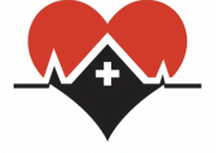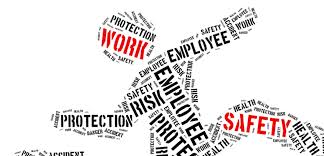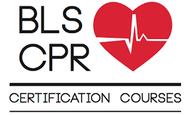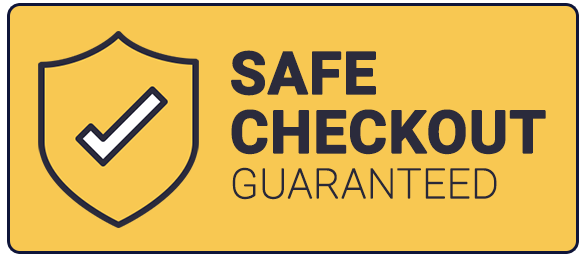SAFETY TOOLS FOR THE WORKPLACEAccidents often occur in the workplace. A recent U.S. Bureau of Labor Statistics Survey of Occupational Illnesses and Injuries revealed approximately 3 million non-fatal injuries and illnesses affected private industry workers and 722,000 impacted state and local government workers in 2014.
There are various quick and efficient easy ways to improve office safety which include the following: 1. Focus on office safety. For example, if office chair breaks or a stairwell light goes out, employees should not hesitate to inform their employers. Employers should then act immediately to respond to workers’ on-the-job safety concerns. 2. Keep your office space clean. Dealing with a messy workplace negatively impacts all employees. If office staff members keep their workstations neat and tidy, employees can then reduce the risk of clutter in the workplace which may potentially results in falls, trips, and other on-the-job mishaps. 3. Provide workplace safety and health training. Education is an empowering tool for employees. If employers develop effective office safety training programs and update their programs consistently, employers can teach their employees methods to identify and address on-the-job crisis in an expedited manner. 4. Schedule regular employee meetings. Allow employees the opportunity to express their on-the-job safety concerns by scheduling monthly meetings. Workplace meetings can enable employers to share their progress as they strive to create safe, effective work environments designed to help workers become more productive. Let's also not forget a few of the basic workplace safety tools which include the following: A. Ergonomic Supplies: A regular office chair or desk may be insufficient, as either of these items may cause employees to suffer carpal tunnel and back and neck pain over time. The use of ergonomic supplies will allow an employer can help workers remain comfortable as they perform day-to-day tasks while minimizing the risk of long-term injuries. B. Back Braces: Back braces should be available and used when the employee lifts heavy items. Not only do back braces allow employees to lift heavy items with ease but they are also a sound preventative measure to avoid potential back or neck injuries. C. Fire Alarm: How will workers know of a potential fire or fire hazard in the workplace? If a fire alarm is in place, workers can receive an instant notification at the first sign of a fire. In addition, the fire alarm should also be monitored to ensure proper operation and necessary maintenance. D. Fire Extinguisher: Employees must act quickly to minimize the damage of a fire in the event it occurs. With a fire extinguisher in a common place, employees can work fast to diffuse a fire. Subsequently, employers should keep all fire extinguishers in locations that are easy to find and ensure all employees are knowledgeable of how to use the fire extinguisher. E. First Aid Kit: The first aid kit should include cold packs, disinfectants, bandages and other first aid items. If an on-the-job accident occurs, employees can then use the tools available in the the first aid kit to provide immediate assistance until advanced medical personnel arrive on scene. It is also important to ensure that the first aid kit is replenished when items are used. F. Flashlights: Flashlights are important in the workplace in the event of a power outage and/or an electrical storm. Flashlights allow employees to find one another, even in the dark. Employers also should have plenty of batteries on hand to ensure these flashlights will remain operational in blackouts and other emergencies. G. Gloves: Safety hygiene and protocol is critical, particularly if employees are tasked with cleaning up a workspace mess that involves bodily fluids. H. Ladders: Ladders and stepstools should be made available in the workplace to ensure employees can remain safe when they reach for normally inaccessible areas. While using a ladder or stepstool, an employee who climbs the rungs should work and communicate with a fellow employee who remains at the bottom of the ladder or stepstool. I. Warning Signs: A wet bathroom or tiled area can be dangerous, and even a single misstep can lead to long-lasting harm. Warning signs are easy to set up and can be used to help workers identify trip and fall hazards. Workplace safety can have long lasting effects on employees regardless of a company’s size, stature or industry. Employers that wish to enhance their current organizational safety and wellness plans can provide on-the-job safety training which should include cardiopulmonary resuscitation (CPR) and first aid training. To learn more about CPR and First Aid training for your workplace contact us at 210-380-5344.
Comments
SO WHAT IS "BLS"?"Can you tell me if I'm signing up for the right class?" That's a question we hear often at Help-A-Heart CPR. Due to various professions, work environments, and state licensing regulations, it can be confusing understanding the CPR class you need to take to satisfy all of the necessary requirements.
WHAT IS BLS? BLS stands for "Basic Life Support", and is the basic CPR course for most professionals in the healthcare environment. The CPR protocol covered in the American Heart Association BLS class are applicable to all critical medical situations. Basic Life Support is just that. The basic CPR skills of compressions are reviewed as well as breathing, and AED use, for both one-rescuer and multi-rescuer situations. Modifications to these procedures that are not covered in lay rescuer CPR training include administering pulse checks, using bag valve masks (BVMs), CPR in the presence of an advanced airway, and addressing the various issues having to do with team dynamics. WHO MIGHT NEED TO TAKE BLS? Healthcare providers and/or those entering the healthcare industry are the students most often seeking the BLS CPR class. For the majority of healthcare professionals, basic life support training is a necessity. Since the few moments following a medical crisis are so critical, often meaning the difference between life and death, anyone charged with caring for patients must be prepared in the event of a life-threatening emergency. Some of the professions most often needing BLS include nurses, physicians, EMT's, paramedics, pharmacists, physical therapists, respiratory therapists, medical students, nursing students, nutritionists, dietary aides, and mental health counselors. In the U.S., there’s an American Heart Association-mandated protocol for the immediate treatment of critical events that must be closely followed by anyone licensed to practice medicine in any form. It is the responsibility of all those responsible for treating the public, to also renewal their BLS certification every two years. In addition, with periodic changes being made to the guidelines, timely renewal is also mandatory. BLS CLASS OPTIONS For newly licensed healthcare providers, we offer BLS certification classes that strictly follow the AHA guidelines for immediate, on-site treatment of life-threatening medical emergencies. The class curriculum includes training in adult, child, and infant CPR; conscious and unconscious choking protocols for all ages; Automated External Defibrillator (AED) operation; the employment of breathing barriers and bag valve masks; two-rescuer CPR instruction; cardiopulmonary emergency protocol; and special resuscitation situations. Upon successful completion of the course, students will achieve AHA BLS certification and be ready to pursue their medical career possessing the skills they need to save lives in an emergency situation. With the specific needs of our students in mind, we also offer BLS certification classes in two other forms: one designed for those already deeply familiar with the protocols and simply looking to BLS renewal classes, and one blended learning program that takes into account the often hectic schedules of medical professionals. The Heartcode BLS certification involves the blended learning option and allows students to complete the online course and didactic portion at their own convenience. The students is then able to schedule the hands-on skills testing which typically lasts 20 to 40 minutes. WHAT IS THE HANDS-ON BLS CLASS LIKE? The American Heart Association BLS Provider class involves extensive hands-on practice. The intent is to reinforce the basic skills of healthcare provider CPR in an environment that is focused on learning while being supportive, structured, and supervised by an experienced BLS instructor. The face-to-face BLS CPR classes at Help-A-Heart CPR optimize skills development which allow for effective review, reinforcement, and when required, correction and modification. Whether you are seeking a BLS Renewal class or will be taking BLS for the first time, our classroom training will empower you with the skills to administer CPR effectively and with confidence. In addition, if you are continuing your training with the American Heart Association ACLS (Advanced Cardiac Life Support) certification, the skills you learn and develop in BLS will help you as proceed to gain the ACLS certification. With the best resources in the field and a history of excellence, Help-A-Heart CPR represents the very finest in emergency education. Our courses are taught only by acknowledged experts in their fields with real world experience in the on-site treatment of medical emergencies. Our goal at Help-A-Heart CPR is to empower students and provide educational materials designed to make the learning experience as smooth and effective as possible. In our BLS CPR classes, we maintain a one-to-one manikin-to-student ratio to ensure that students are able to practice techniques effectively and at sufficient length. We’re proud to offer the best in life-saving training. |
AuthorDr. Tracy A. Jones is the CEO of Help-A-Heart CPR, LLC and an American Heart Association, ASHI, and American Red Cross Master Program Trainer, Instructor, & AHA Faculty Member located in San Antonio, Texas. Archives
June 2024
Categories |
Help-A-Heart CPR, LLC | 1747 Citadell Plaza Suite 101 | San Antonio, Texas 78209 | (210) 380-5344 | [email protected]
Copyright © Help-A-Heart CPR, LLC 2024
100% Certification Acceptance
We promise your employer, school, or agency will accept the certification card we issue to you. If there is a question of acceptance or validity, simply send us an email at [email protected] with full details. We will reach out to the individual/entity and provide accreditation information. If still there’s a question, we will provide you with a full refund of your class fee. It’s that simple.
We promise your employer, school, or agency will accept the certification card we issue to you. If there is a question of acceptance or validity, simply send us an email at [email protected] with full details. We will reach out to the individual/entity and provide accreditation information. If still there’s a question, we will provide you with a full refund of your class fee. It’s that simple.
|
Communities Served
ALABAMA: Birmingham
ARKANSAS: Fayetteville, Hot Springs, Jonesboro, Little Rock NEW MEXICO: Albuquerque TENNESSEE: Knoxville TEXAS: Amarillo, Arlington, Austin, Bandera, Bastrop, Boerne, Brownsville, Comfort, Converse, Corpus Christi, Dallas/Ft. Worth, Del Rio, Dripping Springs, El Paso, Floresville, Fredericksburg, Georgetown, Harlingen, Houston, Junction, Katy, Kerrville, Kingsville, Kingwood, Laredo, Lubbock, Lufkin, McAllen, Midland, New Braunfels, Odessa, Pleasanton, Round Rock, San Angelo, San Marcos, Schertz, Seguin, Taylor, Temple, Texarkana, Tyler, Universal City, Victoria, Waco, The Woodlands |
Why Choose Help-A-Heart CPR?
1. Flexible Scheduling
2. On and Off Location Training Available 3. Casual, Fun Atmosphere 4. Best Price Guarantee 5. All Instructors are AHA and/or ARC certified 6. 5 Star Google Reviews 7. Blended Learning (Online & Skills Check) Available 8. Meets OSHA & College CPR Requirements 9. Get Certified Within 3-4 Hours 10.Certification Is Good For Two Years 11. Official AHA/ARC/ASHI Training Site 12. High Quality Safety Training! |









